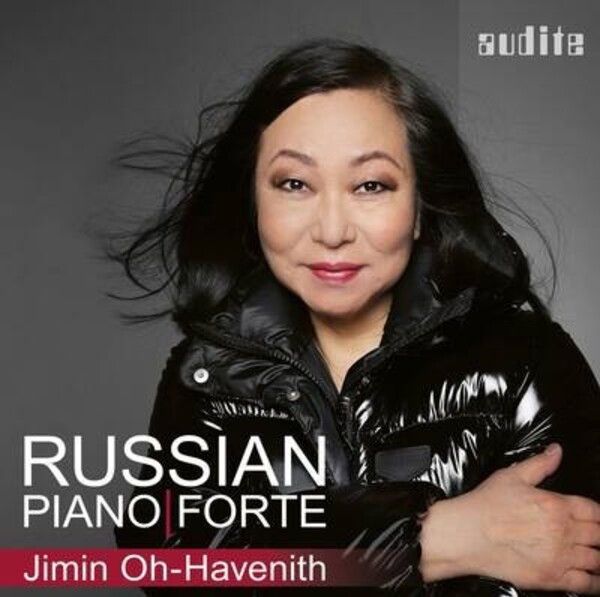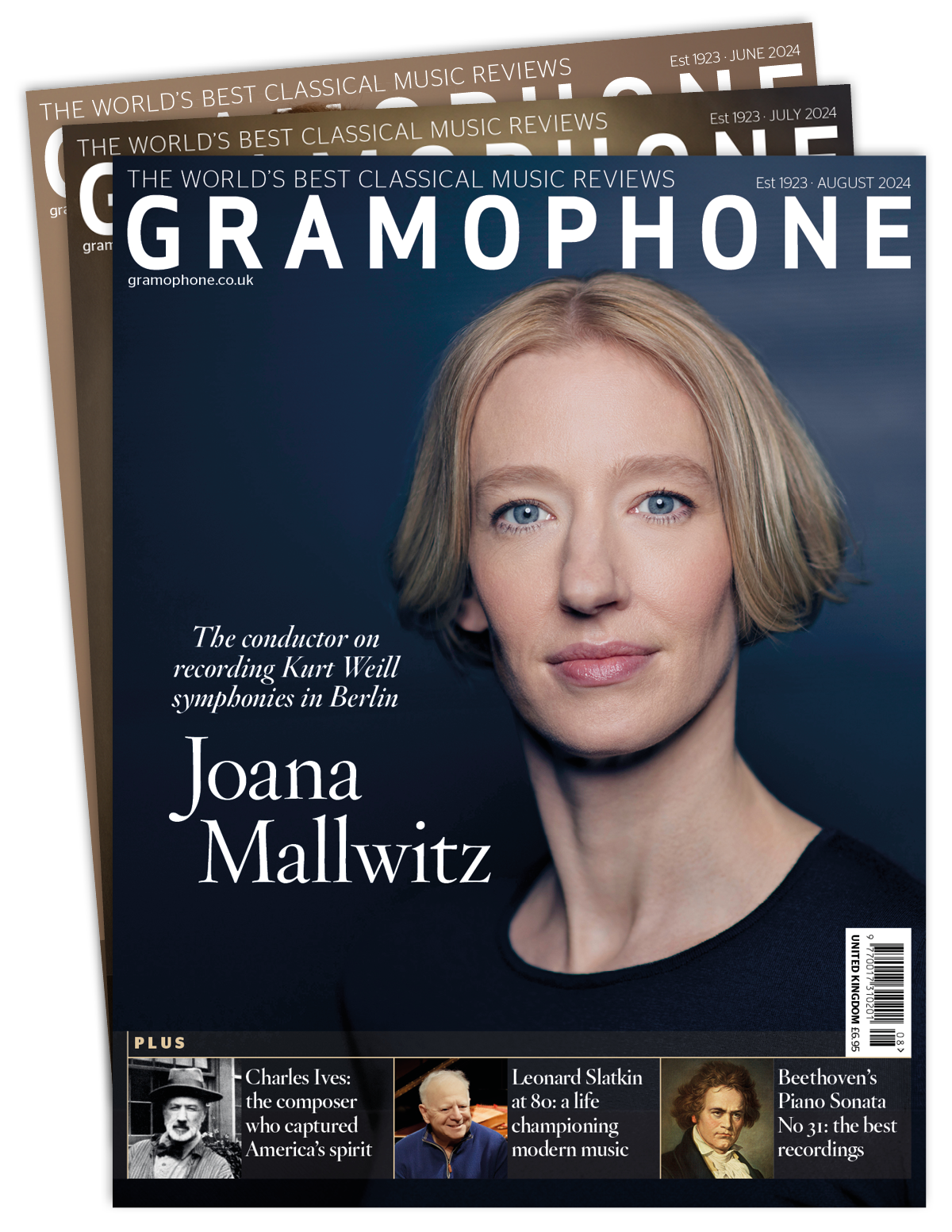Jimin Oh-Havenith: Russian Piano Forte
View record and artist detailsRecord and Artist Details
Genre:
Instrumental
Label: Audite
Magazine Review Date: 10/2022
Media Format: CD or Download
Media Runtime: 75
Mastering:
DDD
Catalogue Number: AUDITE200 49

Tracks:
| Composition | Artist Credit |
|---|---|
| Pictures at an Exhibition |
Modest Mussorgsky, Composer
Jimin Oh-Havenith, Piano |
| Prelude |
Julian Scriabin, Composer
Jimin Oh-Havenith, Piano |
| (8) Etudes, Movement: No. 4 in F sharp |
Alexander Scriabin, Composer
Jimin Oh-Havenith, Piano |
| (8) Etudes, Movement: No. 5 in C sharp minor |
Alexander Scriabin, Composer
Jimin Oh-Havenith, Piano |
| (4) Preludes, Movement: C |
Alexander Scriabin, Composer
Jimin Oh-Havenith, Piano |
| (24) Preludes, Movement: B flat, Op. 23/2 |
Sergey Rachmaninov, Composer
Jimin Oh-Havenith, Piano |
| (24) Preludes, Movement: G flat, Op. 23/10 |
Sergey Rachmaninov, Composer
Jimin Oh-Havenith, Piano |
| (24) Preludes, Movement: B minor, Op. 32/10 |
Sergey Rachmaninov, Composer
Jimin Oh-Havenith, Piano |
| (24) Preludes, Movement: D flat, Op. 32/13 |
Sergey Rachmaninov, Composer
Jimin Oh-Havenith, Piano |
Author: Jeremy Nicholas
In the small differences between Mussorgsky’s original piano score and Rimsky-Korsakov’s revision, Jimin Oh-Havenith sticks quite faithfully to the manuscript. That’s to say, ‘Bydło’ begins ff (Rimsky suggests p poco a poco cresc) and stays that way until it fades away into the distance; the grace notes 21 bars before the end of ‘Baba-Yaga’ are omitted; though she does make a repeat (à la Rimsky) of the second section of ‘Samuel Goldenburg and Schmuÿle’. The South Korean-born pianist, now resident in Germany, has made a careful study of the score. In fact care and caution are the watchwords here. A quaver rest in the right hand over a held minim in the left is duly and subtly observed. It’s all there – except this is more like Pictures in a Public Library. Except for the opening of ‘Bydło’, the viewer tiptoes round the gallery, hardly daring to speak above a whisper. There seems little to engage the interest, for all the pictures are painted in the same range of beige and mottled green. Where are the vivid splashes of scarlet and ultramarine? ‘Tuileries’ is allegretto non troppo, but where is the caprice? Again, ‘Baba-Yaga’ is allegro con brio but hardly feroce. Not, I’m afraid, a competitor against Richter, Andsnes, Tiempo or Janis in their various personal responses to the exhibition.
Oh-Havenith makes a deeper impression with the four Scriabin items. Cool introspection seems to be her strongest card – I loved her handling of the two delicate Preludes and the B minor Prelude from Rachmaninov’s Op 32 – though in the C sharp minor Étude from Scriabin’s Op 42 set and in Rachmaninov’s B flat major Prelude from Op 23, she is comfortably at home delivering fiery passion with uninhibited élan. These are well played indeed, while in the final Rachmaninov Prelude in D flat Oh-Havenith has a vitality and range of colours almost entirely absent in the Mussorgsky. Enough to compensate for Pictures? Possibly. It depends if her programme appeals. Either way, superbly recorded in the Schafstall, Marienmünster, her chosen instrument, a sumptuously voiced Bösendorfer, is well worth hearing.
Explore the world’s largest classical music catalogue on Apple Music Classical.
Included with an Apple Music subscription. Download now.

Gramophone Digital Club
- Digital Edition
- Digital Archive
- Reviews Database
- Full website access
From £8.75 / month
Subscribe
Gramophone Full Club
- Print Edition
- Digital Edition
- Digital Archive
- Reviews Database
- Full website access
From £11.00 / month
Subscribe
If you are a library, university or other organisation that would be interested in an institutional subscription to Gramophone please click here for further information.




